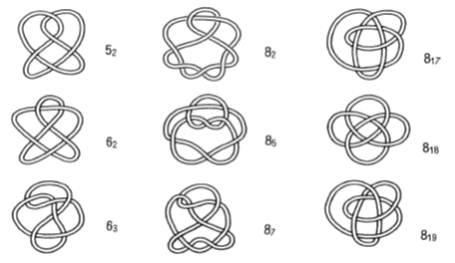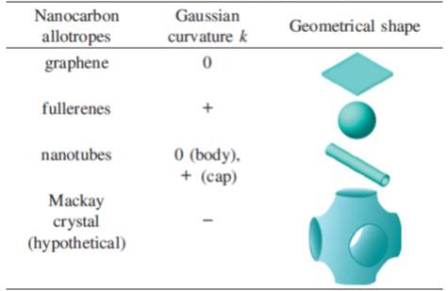All issues

Successor
Volume 34, Issue 1
Displaying 1-13 of 13 articles from this issue
- |<
- <
- 1
- >
- >|
New Year's Greeting
-
Seizo MORITA2013 Volume 34 Issue 1 Pages 1
Published: January 10, 2013
Released on J-STAGE: January 23, 2013
JOURNAL FREE ACCESSDownload PDF (193K)
Preface
-
—Explore Possible Collaboration with Science and Technology—Motoko KOTANI2013 Volume 34 Issue 1 Pages 2
Published: January 10, 2013
Released on J-STAGE: January 23, 2013
JOURNAL FREE ACCESSDownload PDF (217K)
Special Issue: A New Interdisciplinary between Modern Mathematics and Materials Science
-
Motoko KOTANIArticle type: Review
2013 Volume 34 Issue 1 Pages 3-8
Published: January 10, 2013
Released on J-STAGE: January 23, 2013
JOURNAL FREE ACCESSDirect interaction of mathematics with science and technology is a global new trend. Along that, Mathematics Program "Alliance for Breakthrough between Mathematics and Sciences" at JST started under the leadership of Yasumasa Nishiura in 2007. As a research team, "a mathematical challenge to a new materials science based on discrete geometry" has been carried out by the author. She, a mathematician, is now Director of Advanced Institute for materials research, Tohoku University. In the present article, she explains what is discrete geometric analysis and what is the mathematical challenge in the Mathematics Program, or at AIMR Tohoku University. View full abstractDownload PDF (820K)
View full abstractDownload PDF (820K) -
Hiroyuki SHIMAArticle type: Current Topic
2013 Volume 34 Issue 1 Pages 9-14
Published: January 10, 2013
Released on J-STAGE: January 23, 2013
JOURNAL FREE ACCESSGeometric curvature of a low-dimensional host material often leads to drastic changes in physical properties of the system living upon it. In this article, I give a bird's-eye review on the theoretical progresses on the geometry-property relations, i.e., intriguing correlation between geometric curvature and physical property of the material considered. Some differential-geometry-based approaches that are aimed at quantitative description of physical systems confined to curved surfaces are presented. View full abstractDownload PDF (533K)
View full abstractDownload PDF (533K) -
Tetsuo DEGUCHIArticle type: Current Topic
2013 Volume 34 Issue 1 Pages 15-20
Published: January 10, 2013
Released on J-STAGE: January 23, 2013
JOURNAL FREE ACCESSWe review recent theoretical studies on topological properties of ring polymers in solution. The topology of a ring polymer corresponds to a knot type and is conserved during time evolution. As a typical topological effect we consider topological swelling: The mean square radius of gyration of a ring polymer in solution becomes larger than that of an ideal phantom ring polymer, which has no topological constraint, at the theta temperature of the corresponding linear polymer. Here, at the theta temperature the excluded volume of the linear polymer vanishes effectively. The expansion of the average size is a consequence of the entropic repulsive force due to the topological constraint. We show that topological swelling occurs only for ring polymers with small excluded volume. Furthermore, several topological effects predicted theoretically can now be confirmed directly by experiments in terms of synthetic ring polymers. View full abstractDownload PDF (533K)
View full abstractDownload PDF (533K) -
Tomonari DOTERA, Junichi MATSUZAWAArticle type: Current Topic
2013 Volume 34 Issue 1 Pages 21-26
Published: January 10, 2013
Released on J-STAGE: January 23, 2013
JOURNAL FREE ACCESSWe review our recent numerical simulation result that 48/64 hard spheres per unit cell on the gyroid surface are self-organized by the Alder-transition mechanism. Striking evidence of entropy-driven ordering is obtained in terms of the acceptance ratio of Monte Carlo moves and order parameters. The regular tessellations of the spheres on the triply periodic minimal surface can be viewed as hyperbolic tilings on the Poincaré disc. View full abstractDownload PDF (1051K)
View full abstractDownload PDF (1051K) -
Yasuyuki TEZUKAArticle type: Current Topic
2013 Volume 34 Issue 1 Pages 27-32
Published: January 10, 2013
Released on J-STAGE: January 23, 2013
JOURNAL FREE ACCESSConcepts and practices of topological polymer chemistry have been described. First, systematic classification of nonlinear polymer topologies is introduced on the basis of topological considerations of constitutional isomerism in a series of alkanes (CnH2n+2), monocycloalkanes (CnH2n), and polycycloalkanes (CnH2n−2, CnH2n−4, etc.). Subsequently, topological isomerism occurring on randomly coiled, flexible polymer molecules having cyclic and linear structures is discussed. In practice, moreover, an “electrostatic self-assembly and covalent fixation (ESA-CF)” process has been developed to construct complex multicyclic polymer topologies. The ESA-CF protocol has been extended in conjunction with effective linking/cleaving chemistry including a metathesis process and an alkyne-azide click reaction, to construct a variety of topologically significant multicyclic macromolecular topologies. By making use of such topological polymers, unprecedented opportunities have now been realized to provide new insights on fundamental polymer properties either in solution or bulk, in static or dynamic states, or in self-assemblies. View full abstractDownload PDF (875K)
View full abstractDownload PDF (875K) -
Kaori HIRAHARA, Yoshikazu NAKAYAMAArticle type: Current Topic
2013 Volume 34 Issue 1 Pages 33-37
Published: January 10, 2013
Released on J-STAGE: January 23, 2013
JOURNAL FREE ACCESSWhen a topological defect such as 5- or 7-membered ring is introduced in a hexagonal lattice of graphene, it makes curved nature. It is essential to understand how the topological defects in a carbon nanotube (CNT) is introduced, migrated and eliminated, since it may enable us to design many types of CNT-based hybrid structures showing unique properties. In this paper, some experimental studies on deformation process of individual CNTs by transmission electron microscopy is introduced. View full abstractDownload PDF (1058K)
View full abstractDownload PDF (1058K) -
Jun ONOEArticle type: Current Topic
2013 Volume 34 Issue 1 Pages 38-43
Published: January 10, 2013
Released on J-STAGE: January 23, 2013
JOURNAL FREE ACCESSA. Einstein first applied Riemannian geometry to develop the general theory of relativity almost one hundred years ago and succeeded in understanding astronomical-scale phenomena such as the straining of time-space by a gravitational field. It is of great interest to reveal whether or not Riemannian geometry affects the electronic properties of condensed matters on a much smaller scale. Although Riemannian geometry has been applied to quantum mechanics since the 1950s, nobody has yet answered this question, because the electronic properties of materials with Riemannian geometry have not been examined experimentally. We report here the prediction and observation of Riemannian geometrical effects on the electronic properties of one-dimensional metallic uneven peanut-shaped C60 polymer. View full abstractDownload PDF (904K)
View full abstractDownload PDF (904K)
Planning Series
Surface Science for Energy Issues
-
Yasuo KITAOKA2013 Volume 34 Issue 1 Pages 44-45
Published: January 10, 2013
Released on J-STAGE: January 23, 2013
JOURNAL FREE ACCESSDownload PDF (363K)
Science Café
-
Rie YAMASHITA2013 Volume 34 Issue 1 Pages 46-49
Published: January 10, 2013
Released on J-STAGE: January 23, 2013
JOURNAL FREE ACCESSDownload PDF (386K)
Research Abroad
-
Atsushi KUBO2013 Volume 34 Issue 1 Pages 50-51
Published: January 10, 2013
Released on J-STAGE: January 23, 2013
JOURNAL FREE ACCESSDownload PDF (478K)
News & Trends
-
2013 Volume 34 Issue 1 Pages 52
Published: January 10, 2013
Released on J-STAGE: January 23, 2013
JOURNAL FREE ACCESSDownload PDF (195K)
- |<
- <
- 1
- >
- >|

